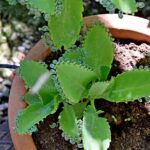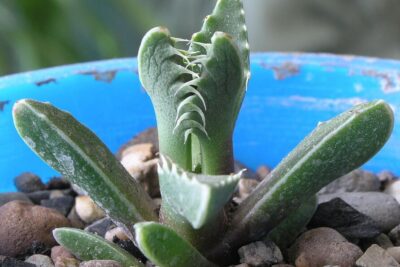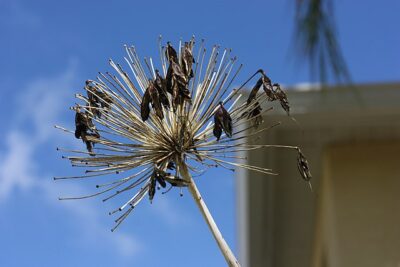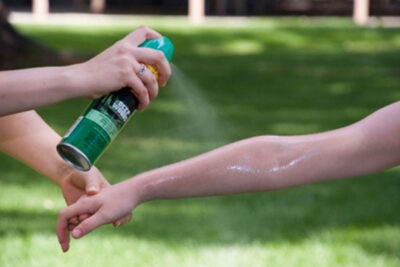
Causes of Shriveled and Wrinkled Leaves in Succulents

Succulents are a popular choice for both indoor and outdoor gardens due to their unique and striking appearance. With their thick, fleshy leaves and ability to store water, succulents are well-adapted to survive in arid conditions. However, sometimes succulents can develop shriveled and wrinkled leaves, which can be a cause for concern for plant owners. Understanding the causes of this issue is key to providing the necessary care and ensuring the health of these plants.
We will explore the various factors that can lead to shriveled and wrinkled leaves in succulents. We will discuss both environmental and cultural factors, such as improper watering, temperature extremes, and inadequate sunlight. Additionally, we will delve into potential pests and diseases that can affect succulents and contribute to leaf shriveling. By understanding these causes, you will be equipped with the knowledge to prevent and address leaf problems in your succulent garden, allowing your plants to thrive and maintain their vibrant, healthy appearance.
- Lack of water
- Overwatering
- Insufficient sunlight
- Extreme temperatures
- Nutrient deficiencies
- Pest infestations
- Pest Infestations
- Disease infections
- Improper potting soil
- Root rot
- Overfertilization
- Transplant shock
- Physical damage
- The leaves of succulents may become shriveled and wrinkled due to a lack of water
- Overwatering can also cause the leaves to shrivel and wrinkle
- Succulents require sufficient sunlight to thrive, and a lack of it can lead to shriveled and wrinkled leaves
- Extreme temperatures, either too hot or too cold, can stress the succulent and cause leaf shriveling and wrinkling
- Nutrient deficiencies in the soil can result in the leaves of the succulent becoming shriveled and wrinkled
- Pest infestations, such as mealybugs or spider mites, can damage the leaves and cause them to shrivel and wrinkle
- Succulents can be susceptible to various diseases, which can lead to shriveled and wrinkled leaves
- Using improper potting soil that does not drain well can cause excess moisture to accumulate around the roots, leading to leaf shriveling and wrinkling
- Root rot, often caused by overwatering or poorly draining soil, can result in shriveled and wrinkled leaves
- Overfertilization can cause salt buildup in the soil, which can harm the succulent and cause leaf shriveling and wrinkling
- Transplant shock, when a succulent is moved to a new pot or location, can cause stress and lead to shriveled and wrinkled leaves
- Physical damage, such as from rough handling or accidental breakage, can cause the leaves of the succulent to shrivel and wrinkle
- Frequently Asked Questions
- 1. Why are the leaves of my succulent shriveled and wrinkled?
- 2. How can I prevent my succulent leaves from becoming shriveled and wrinkled?
- 3. What should I do if my succulent leaves are already shriveled and wrinkled?
- 4. Are there any specific pests that cause shriveled and wrinkled leaves in succulents?
Lack of water
One of the main causes of shriveled and wrinkled leaves in succulents is a lack of water. Succulents are known for their ability to store water in their leaves, stems, and roots, allowing them to survive in arid environments. However, when succulents do not receive enough water, they begin to dehydrate, resulting in shriveled and wrinkled leaves.
It is important to note that succulents have different water requirements depending on their species and the environment they are in. Some succulents need more frequent watering, while others thrive in drier conditions. Understanding the specific watering needs of your succulents is crucial in preventing leaf shriveling and wrinkling.
To ensure your succulents receive adequate water, it is recommended to water them thoroughly when the top inch of soil feels dry. This allows the water to reach the roots and hydrate the entire plant. However, be cautious not to overwater your succulents as this can lead to root rot and further damage the leaves.
If you notice shriveled and wrinkled leaves on your succulents, it is a clear indication that they are in need of water. Give them a good soak and monitor their progress closely. In most cases, the leaves will plump up and regain their turgidity once they receive sufficient hydration.
 Succulent Health: Healthy vs Unhealthy - Spot the Difference
Succulent Health: Healthy vs Unhealthy - Spot the DifferenceRemember, finding the right balance of water for your succulents is essential for their overall health and appearance.
Overwatering
One of the main causes of shriveled and wrinkled leaves in succulents is overwatering. Succulents are desert plants that have adapted to survive in arid conditions, so they have specialized mechanisms to store water in their leaves, stems, and roots. However, when they are overwatered, these mechanisms become overwhelmed, leading to waterlogged roots and ultimately, shriveled and wrinkled leaves.
When succulents are overwatered, their roots are unable to absorb the excess moisture and may even start to rot. This leads to a lack of nutrients being transported to the leaves, resulting in their wilting and becoming wrinkled and shriveled. Additionally, overwatering can disrupt the balance of beneficial microorganisms in the soil, further affecting the health of the plant.
To avoid overwatering your succulents, it is important to let the soil dry out completely between waterings. Succulents generally prefer infrequent, deep waterings rather than frequent shallow waterings. Ensure that the pot has proper drainage holes and use a well-draining potting mix specifically formulated for succulents. This will allow excess water to drain out, preventing waterlogging and root rot.
Signs of overwatering in succulents:
- Shriveled and wrinkled leaves
- Yellowing or browning of leaves
- Soft and mushy stems or roots
- Foul smell coming from the soil
If you notice any of these signs, it is crucial to adjust your watering routine immediately to prevent further damage to your succulents.
 Understanding the Factors Behind Brown Stem in Succulents
Understanding the Factors Behind Brown Stem in SucculentsInsufficient sunlight
One of the main causes of shriveled and wrinkled leaves in succulents is insufficient sunlight. Succulents are known for their ability to thrive in bright and direct sunlight, and they require a minimum of 6 hours of sunlight per day to maintain their health and appearance.
When succulents do not receive enough sunlight, their leaves may start to shrivel and become wrinkled. This is because succulents store water in their leaves, and when they are not exposed to enough sunlight, they are unable to perform photosynthesis effectively. As a result, the plant cannot produce enough energy to maintain its turgidity, leading to shriveled and wrinkled leaves.
To prevent this issue, it is essential to place your succulents in a location where they can receive adequate sunlight. A sunny windowsill or a spot in your garden with direct sunlight is ideal for most succulent varieties. If you notice your succulent's leaves starting to shrivel or wrinkle, try moving it to a brighter location and monitor its progress.
Additionally, it is crucial to strike a balance between providing enough sunlight and avoiding excessive exposure. Succulents can also suffer from sunburn if they are exposed to intense sunlight for prolonged periods. If you live in an area with scorching summers, it might be necessary to provide some shade during the peak hours of the day to protect your succulents from sunburn.
Insufficient sunlight can cause shriveled and wrinkled leaves in succulents. By ensuring your succulents receive the right amount of sunlight and avoiding excessive exposure, you can help them maintain their vibrant and healthy appearance.
Extreme temperatures
 Troubleshooting: Is My Succulent Dying from the Bottom Up?
Troubleshooting: Is My Succulent Dying from the Bottom Up?One of the main causes of shriveled and wrinkled leaves in succulents is exposure to extreme temperatures. Succulents are known for their ability to thrive in arid and dry conditions, making them susceptible to damage when exposed to extreme heat or cold.
When succulents are exposed to high temperatures, the excessive heat can cause the plant to lose water at a rapid rate. This leads to dehydration and results in shriveled and wrinkled leaves. On the other hand, succulents exposed to freezing temperatures can suffer from frost damage, causing their leaves to become discolored, wilted, and ultimately shriveled.
To prevent damage from extreme temperatures, it is crucial to provide adequate protection for your succulents. During hot summer months, consider providing shade or moving the plants to a cooler spot. In colder climates, it is advisable to bring potted succulents indoors or provide insulation to outdoor plants.
Additionally, it is important to avoid sudden temperature changes, as succulents react poorly to drastic fluctuations. Gradual acclimation to new temperatures will help minimize stress on the plants and reduce the likelihood of shriveled and wrinkled leaves.
Nutrient deficiencies
A common cause of shriveled and wrinkled leaves in succulents is nutrient deficiencies. Succulents have specific requirements for nutrients, and if they are not met, it can lead to leaf problems.
One nutrient that is crucial for succulents is nitrogen. Nitrogen is essential for the production of chlorophyll, which is responsible for the green color in leaves. If a succulent lacks nitrogen, its leaves may appear pale or yellow and become shriveled.
Another important nutrient for succulents is phosphorus. Phosphorus plays a vital role in energy transfer and root development. If a succulent lacks phosphorus, its leaves may become dark and develop brown spots, leading to wrinkling and shriveling.
 The Common Reasons Succulents Die Easily: Understanding the Challenges
The Common Reasons Succulents Die Easily: Understanding the ChallengesPotassium is also essential for succulent health. It helps regulate water balance in plants, and a deficiency can cause leaves to wilt and shrivel. In severe cases, the edges of the leaves may turn brown or black.
Magnesium is a micronutrient that succulents require in small amounts. It is crucial for chlorophyll production and overall plant growth. A magnesium deficiency can result in yellowing and curling of leaves, leading to a shriveled appearance.
How to address nutrient deficiencies
To address nutrient deficiencies in succulents, it is important to provide them with a well-balanced fertilizer. Look for a fertilizer specifically formulated for succulents, as it will contain the necessary nutrients in the correct ratios.
When applying fertilizer, follow the instructions provided by the manufacturer, as over-fertilizing can be harmful to succulents. It is also crucial to water the plants properly, as excessive watering can leach out nutrients from the soil.
If you suspect a nutrient deficiency in your succulent, you can also consider conducting a soil test. This will help identify any specific deficiencies and allow you to adjust the fertilizer accordingly.
In addition to addressing nutrient deficiencies, it is essential to ensure that succulents are planted in well-draining soil and receive adequate sunlight. Proper care and attention will help prevent shriveled and wrinkled leaves in succulents.
Pest infestations
Pest Infestations
One of the common causes of shriveled and wrinkled leaves in succulents is pest infestations. Pests such as aphids, mealybugs, and spider mites can wreak havoc on the health of your succulent plants.
 Could Succulents Be Vulnerable to Fungal Infections?
Could Succulents Be Vulnerable to Fungal Infections?Aphids: These tiny insects feed on the sap of the succulent leaves, causing them to shrivel and become distorted. You may also notice a sticky residue, known as honeydew, on the leaves and surrounding areas. Aphids reproduce rapidly, so it's crucial to address the infestation as soon as you spot them.
Mealybugs: Mealybugs are another common pest that can lead to shriveled leaves in succulents. They appear as white, cotton-like clusters on the leaves and stems. Mealybugs feed by sucking the sap from the leaves, which results in wilting and wrinkling. These pests can quickly spread to other succulents, so it's essential to take immediate action.
Spider Mites: Spider mites are tiny arachnids that are difficult to spot with the naked eye. They are known for spinning fine webs on the succulent leaves and causing damage by piercing them to feed on the sap. As a result, the leaves may become shriveled, discolored, and covered in tiny brown or yellow spots. Spider mite infestations can escalate quickly, so early detection is crucial.
To prevent and treat pest infestations in succulents, it's essential to regularly inspect your plants. Look for any signs of pests, such as visible insects, sticky residue, or webbing. If you notice an infestation, you can try using natural remedies like neem oil or insecticidal soap. However, severe infestations may require the use of chemical pesticides, so it's crucial to follow the instructions carefully and consider the potential impact on beneficial insects.
In addition to addressing the pest infestation, it's vital to improve the overall health and resilience of your succulents. Providing them with adequate sunlight, proper watering, and well-draining soil can help strengthen their natural defenses against pests.
Disease infections
One of the main causes of shriveled and wrinkled leaves in succulents is disease infections. Succulents are generally hardy plants, but they are still susceptible to various diseases that can cause their leaves to become unhealthy and dehydrated.
 Can Succulents Survive Fire? Fire Safety for Hardy Plants
Can Succulents Survive Fire? Fire Safety for Hardy Plants1. Fungal infections: Fungal infections are quite common in succulents, especially when they are grown in humid or wet conditions. Fungi thrive in moist environments and can quickly attack the leaves, causing them to shrivel and develop wrinkles. Some common fungal infections that affect succulents include powdery mildew, root rot, and black spot disease.
2. Bacterial infections: Bacterial infections can also lead to shriveled and wrinkled leaves in succulents. Bacteria can enter the plants through wounds or cuts on the leaves and spread, causing damage to the tissues. Common bacterial infections in succulents include soft rot and bacterial leaf spot.
3. Viral infections: Although less common, viral infections can also impact the health of succulents. Viruses can be transmitted through insects or contaminated gardening tools, and they can cause the leaves to develop abnormal patterns, become discolored, and eventually shrivel.
Prevention and treatment: To prevent disease infections in succulents, it is important to provide them with proper care and maintain a suitable environment. Avoid overwatering, ensure good air circulation, and keep the succulents clean and free from pests. If you notice any signs of disease, promptly isolate the affected plant and treat it with appropriate fungicides or bactericides.
Regularly inspecting your succulents for any signs of infection and taking immediate action can help keep their leaves healthy and prevent them from shriveling and wrinkling.
Improper potting soil
One of the main causes of shriveled and wrinkled leaves in succulents is the use of improper potting soil. Succulents have unique soil requirements that differ from other plants. They thrive in well-draining soil that allows excess water to flow out easily, preventing waterlogging.
 Identifying Root Rot in Succulents: Yellow Leaves and Soft Stems
Identifying Root Rot in Succulents: Yellow Leaves and Soft StemsUsing regular garden soil or heavy clay-based soil can lead to water retention around the roots, causing the leaves to become soft, shriveled, and wrinkled. This is because succulents are adapted to store water in their leaves, stems, or roots, and they rely on the soil to dry out quickly after watering.
To avoid this issue, it is crucial to use a specialized succulent potting mix. These mixes are typically composed of a combination of coarse sand, perlite, and well-draining soil. The coarse texture of the mix promotes adequate drainage and prevents water accumulation, ensuring the succulent's roots receive just the right amount of moisture.
When repotting your succulents, be sure to gently remove any existing soil from the roots and replace it with the appropriate potting mix. This will help prevent waterlogged soil and allow your succulents to thrive, ultimately avoiding the problem of shriveled and wrinkled leaves.
Root rot
One of the main causes of shriveled and wrinkled leaves in succulents is root rot. Root rot occurs when the roots of the plant are constantly exposed to excess moisture, leading to fungal or bacterial infections. This can happen due to overwatering, poor drainage, or using a soil mixture that retains too much water.
When the roots are affected by rot, they become unable to absorb water and nutrients efficiently, resulting in dehydration and subsequent leaf shriveling. As a defense mechanism, the plant will redirect its limited resources to the surviving leaves, causing them to appear wrinkled and wilted.
To prevent root rot and maintain the health of your succulent, it is essential to provide proper drainage. Ensure that the pot has drainage holes and use a well-draining soil mixture specifically formulated for succulents. Additionally, avoid overwatering and allow the soil to dry out completely between waterings.
 Causes of White Spots on Succulent Leaves: A Comprehensive Guide
Causes of White Spots on Succulent Leaves: A Comprehensive GuideIf your succulent is already showing signs of root rot, it is crucial to take immediate action. Carefully remove the plant from its pot and inspect the roots. Trim off any diseased or mushy roots using sterile pruning shears. Allow the plant to dry out for a few days before repotting it in fresh, well-draining soil.
Key points:
- Root rot is a common cause of shriveled and wrinkled leaves in succulents.
- Excess moisture due to overwatering or poor drainage leads to root infections.
- Root rot prevents efficient water and nutrient absorption, resulting in leaf dehydration.
- Prevent root rot by providing proper drainage and using well-draining soil.
- If root rot is present, trim affected roots and repot the succulent in fresh soil.
By addressing root rot promptly and implementing proper care, you can help your succulent regain its vitality and prevent further leaf damage.
Overfertilization
One common cause of shriveled and wrinkled leaves in succulents is overfertilization. While it's important to provide nutrients to your plants, too much fertilizer can be detrimental to their health. Succulents are adapted to survive in nutrient-poor environments, and excessive fertilizer can cause the roots to burn and hinder their ability to absorb water.
When succulents receive an excess of nitrogen, phosphorus, or potassium, it disrupts their natural balance and can lead to leaf damage. The leaves may appear shriveled, wrinkled, or discolored. In severe cases, the entire plant may show signs of distress, with leaves turning yellow or even falling off.
 Why Your Succulent Died Overnight and How to Prevent It
Why Your Succulent Died Overnight and How to Prevent ItTo prevent overfertilization, it's crucial to follow the recommended dosage and frequency provided by the fertilizer manufacturer. Additionally, it's important to choose a well-balanced fertilizer specifically formulated for succulents. These fertilizers usually have a higher ratio of potassium to nitrogen and phosphorus, which better suits the needs of these plants.
If you suspect overfertilization, it's best to flush out the excess nutrients by thoroughly watering the succulent until water drains out from the bottom of the pot. This will help dilute the concentration of fertilizer in the soil and allow the plant to recover.
Tips to prevent overfertilization:
- Read and follow the instructions on the fertilizer packaging.
- Use a well-balanced fertilizer specifically formulated for succulents.
- Consider using a slow-release fertilizer to provide a steady supply of nutrients over time.
- Monitor your plants for signs of overfertilization, such as leaf discoloration or wilting.
- Flush out excess nutrients by watering your succulents thoroughly.
By being mindful of your succulents' nutrient needs and providing them with a balanced fertilizer regimen, you can prevent the occurrence of shriveled and wrinkled leaves caused by overfertilization.
Transplant shock
One of the common causes of shriveled and wrinkled leaves in succulents is transplant shock. When a succulent is moved from one pot to another or from the nursery to your home, it can experience a period of stress known as transplant shock.
This occurs because the succulent's roots are disturbed during the transplant process, leading to a temporary disruption in water and nutrient uptake. As a result, the leaves may appear shriveled and wrinkled.
 Are Mother of Thousands Succulents Toxic to Pets?
Are Mother of Thousands Succulents Toxic to Pets?To minimize transplant shock, it is important to handle the succulent with care and ensure that the new pot has well-draining soil. Additionally, allowing the succulent to adjust gradually to its new environment by providing adequate sunlight and watering can help reduce the chances of transplant shock.
If your succulent is currently experiencing transplant shock, it is advisable to avoid overwatering as it can further stress the plant. Instead, follow a regular watering schedule and allow the soil to dry out between waterings.
Tips to prevent or minimize transplant shock:
- Choose a suitable pot with drainage holes.
- Use well-draining soil specifically formulated for succulents.
- Handle the succulent gently during the transplant process.
- Gradually introduce the succulent to its new environment.
- Avoid overwatering and follow a proper watering schedule.
By taking these precautions and providing proper care, you can help your succulent recover from transplant shock and regain its healthy, plump leaves.
Physical damage
Physical damage is a common cause of shriveled and wrinkled leaves in succulents. These plants have thick, fleshy leaves that store water, making them more susceptible to damage from external factors.
One common form of physical damage is sunburn. Succulents are known for their ability to thrive in sunny conditions, but they can still get burned if exposed to intense sunlight for extended periods. The leaves may appear scorched, turning brown or yellow and becoming shriveled and wrinkled. To prevent sunburn, it is important to gradually acclimate succulents to brighter sunlight and provide them with some shade during the hottest parts of the day.
Another cause of physical damage is frost or freezing temperatures. Succulents are generally not frost-tolerant, and exposure to cold temperatures can damage their leaves. When succulents freeze, the water inside their cells expands, causing the cells to burst and resulting in shriveled and wrinkled leaves. To protect succulents from frost, it is advisable to bring them indoors or provide them with proper insulation during cold winter months.
Additionally, physical damage can occur from mishandling or accidental injury. Rough handling, improper repotting, or accidentally dropping a succulent can cause its leaves to become damaged and shriveled. It is important to handle succulents with care and use appropriate tools when repotting to minimize the risk of physical damage.
Physical damage is a common cause of shriveled and wrinkled leaves in succulents. Taking preventative measures such as providing shade, protecting from frost, and handling with care can help maintain the health and appearance of these beautiful plants.
The leaves of succulents may become shriveled and wrinkled due to a lack of water
One of the main causes of shriveled and wrinkled leaves in succulents is a lack of water. Succulents are known for their ability to store water in their leaves, stems, and roots, allowing them to survive in arid environments. However, if a succulent does not receive enough water, its leaves may start to shrivel and lose their plumpness.
When a succulent is dehydrated, it will try to conserve as much water as possible by reducing the amount of water it loses through transpiration. Transpiration is the process by which plants lose water through their leaves. When a succulent is lacking water, it will close its stomata, which are tiny openings on the surface of the leaves that allow for gas exchange. By closing the stomata, the succulent reduces the amount of water vapor that escapes, but this also means that the plant cannot take in carbon dioxide needed for photosynthesis.
In addition to a lack of water, shriveled and wrinkled leaves in succulents can also be caused by other factors such as overwatering, insufficient sunlight, and poor drainage. Overwatering can lead to root rot, which affects the plant's ability to uptake water and can cause the leaves to shrivel. Insufficient sunlight can prevent the succulent from photosynthesizing and producing energy, resulting in weak and unhealthy leaves. Poor drainage can cause water to accumulate in the soil, leading to root rot and ultimately causing the leaves to shrivel.
To prevent shriveled and wrinkled leaves in succulents, it is important to find the right balance of water, sunlight, and drainage. Succulents should be watered sparingly, allowing the soil to dry out between waterings. They also require bright sunlight to thrive, so placing them near a window or providing them with artificial light can help prevent leaf shrinkage. Lastly, it is crucial to ensure that the succulent is planted in well-draining soil or a pot with drainage holes to prevent water from accumulating and causing root rot.
Shriveled and wrinkled leaves in succulents can be caused by a lack of water, overwatering, insufficient sunlight, and poor drainage. By properly managing these factors, succulent owners can help maintain the health and appearance of their plants.
Overwatering can also cause the leaves to shrivel and wrinkle
Overwatering is a common mistake that succulent owners make, and it can lead to shriveled and wrinkled leaves. When succulents are given too much water, their roots become waterlogged, which prevents them from absorbing oxygen properly. As a result, the leaves may start to shrivel and wrinkle.
It's important to remember that succulents are adapted to survive in arid conditions, so they have specialized water storage tissues that allow them to withstand long periods without water. When they receive too much water, these tissues become saturated, causing the leaves to plump up and eventually shrivel.
One way to avoid overwatering is to make sure that the soil is completely dry before watering your succulents again. Succulents prefer a well-draining soil mixture, so using a cactus or succulent-specific soil can help prevent water retention. Additionally, it's crucial to use a container with drainage holes to allow excess water to escape.
If you notice shriveled and wrinkled leaves on your succulents, it's important to adjust your watering habits immediately. Allow the soil to dry out completely before watering again, and make sure to provide adequate sunlight and ventilation to promote healthy growth.
Succulents require sufficient sunlight to thrive, and a lack of it can lead to shriveled and wrinkled leaves
When it comes to growing succulents, one of the most common issues that plant owners face is shriveled and wrinkled leaves. These unsightly symptoms can be quite alarming, but they often indicate an underlying problem that can be easily addressed.
One of the primary causes of shriveled and wrinkled leaves in succulents is a lack of sufficient sunlight. Succulents are sun-loving plants that have adapted to thrive in arid environments. They have evolved to store water in their leaves, stems, or roots, allowing them to survive in dry conditions. However, this also means that they require a good amount of sunlight to carry out photosynthesis effectively.
When succulents don't receive enough sunlight, they struggle to produce the energy they need to sustain themselves. As a result, their leaves may start to shrivel and wrinkle as the plant tries to conserve water and energy. In extreme cases, the leaves may even become discolored or turn yellow.
To prevent shriveled and wrinkled leaves caused by insufficient sunlight, it's essential to provide your succulents with the right amount of light. Most succulents thrive in bright, indirect light or at least 6 hours of direct sunlight per day. Place them near a south-facing window or provide supplemental grow lights if you don't have access to adequate natural light.
It's important to note that while succulents love sunlight, they can still get sunburned if exposed to intense, direct sunlight for extended periods. If you notice signs of sunburn, such as brown or white patches on the leaves, it's best to move your succulents to a shadier location or provide them with some shade during the hottest parts of the day.
In addition to sunlight, other factors such as overwatering, poor soil drainage, and temperature extremes can also contribute to shriveled and wrinkled leaves in succulents. It's crucial to find the right balance of water, well-draining soil, and suitable temperature conditions to ensure the overall health of your succulent plants.
Shriveled and wrinkled leaves in succulents are often a result of a lack of sufficient sunlight. By providing your succulents with the right amount of light and ensuring proper care, you can help prevent these symptoms and keep your succulents thriving and looking their best.
Extreme temperatures, either too hot or too cold, can stress the succulent and cause leaf shriveling and wrinkling
Extreme temperatures, whether they are too hot or too cold, can have a significant impact on the health of succulent plants. When exposed to excessively high temperatures, succulents may experience leaf shriveling and wrinkling as a result of water loss through evaporation. On the other hand, extremely cold temperatures can cause damage to the leaf tissues, leading to similar symptoms.
It is important to note that different succulent species have varying temperature tolerances. While some succulents thrive in hot and arid climates, others prefer milder temperatures. Therefore, it is crucial to understand the specific temperature requirements of each plant to maintain their health and prevent leaf issues.
To protect succulents from extreme temperature conditions, it is advisable to provide them with adequate insulation. This can be achieved by placing them in a greenhouse or providing shade during scorching hot days. Additionally, during cold winter months, it is essential to bring the succulents indoors or cover them with protective structures to shield them from freezing temperatures.
Proper care and attention to temperature fluctuations can help prevent leaf shriveling and wrinkling in succulents, ensuring that they thrive and maintain their natural beauty.
Nutrient deficiencies in the soil can result in the leaves of the succulent becoming shriveled and wrinkled
One of the main causes of shriveled and wrinkled leaves in succulents is nutrient deficiencies in the soil. Succulents, like many other plants, require a balanced combination of nutrients to thrive and maintain healthy foliage. When these essential nutrients are lacking in the soil, it can lead to various symptoms, including shriveled and wrinkled leaves.
There are several key nutrients that succulents need to grow properly, such as nitrogen, phosphorus, and potassium. Nitrogen plays a crucial role in promoting leaf and stem growth, while phosphorus aids in root development and overall plant health. Potassium, on the other hand, helps with water regulation and assists in the synthesis of sugars and starches.
When the soil lacks these vital nutrients, the succulent's leaves may start to show signs of distress. They may appear shriveled, with a wrinkled or crinkled texture. Additionally, the leaves might turn yellow or brown, further indicating a nutrient deficiency.
To address this issue, it is important to ensure that your succulent receives the necessary nutrients. Consider using a well-balanced fertilizer specifically designed for succulents, as it will provide the essential nutrients in the correct proportions. Fertilize your succulent according to the instructions on the packaging, taking care not to overdo it, as excessive fertilizer can also harm the plant.
In addition to providing proper nutrition, it is crucial to monitor the moisture levels in the soil. Overwatering or underwatering can also lead to shriveled and wrinkled leaves in succulents. These plants have adapted to survive in arid conditions, and they require well-draining soil to prevent root rot. Therefore, it is essential to allow the soil to dry out between waterings and avoid overwatering, which can cause the roots to suffocate and the leaves to appear shriveled.
Regularly inspect your succulent for any signs of nutrient deficiencies or other issues. Adjust the watering and fertilizing routine as necessary, and provide the appropriate care to help your succulent regain its vitality and restore its lush, plump leaves.
Pest infestations, such as mealybugs or spider mites, can damage the leaves and cause them to shrivel and wrinkle
When it comes to the health of your succulents, one of the most common issues you may encounter is shriveled and wrinkled leaves. This can be quite distressing, especially if you've put in a lot of effort to care for your plants. However, there are several causes for this problem, and one of the main culprits is pest infestations.
Pests like mealybugs or spider mites can wreak havoc on your succulents, causing the leaves to shrivel and develop wrinkles. These tiny creatures feed on the sap of the leaves, draining the plant of its vital nutrients. As a result, the affected leaves become dehydrated and lose their plumpness, leading to a shriveled and wrinkled appearance.
To identify if your succulents are suffering from a pest infestation, closely examine the leaves and stems. Look for small, cotton-like clusters or fine webbing, which are telltale signs of mealybugs or spider mites, respectively. You may also notice tiny insects crawling on the plant or see evidence of their feeding, such as yellowing or browning of the leaves.
If you discover that your succulents are indeed infested with pests, it's crucial to take immediate action to prevent further damage. Firstly, isolate the affected plants to prevent the infestation from spreading to other healthy plants. Next, you can manually remove the pests by gently wiping them off the leaves with a cotton swab dipped in rubbing alcohol. Alternatively, you can use a mild insecticidal soap or neem oil solution to treat the infested plants.
Remember to follow the instructions on the product labels and apply the treatment carefully, ensuring that all parts of the plant are adequately covered. Additionally, it's important to continue monitoring your succulents after treatment to ensure the infestation is fully eradicated.
Prevention is always better than cure, so to minimize the risk of pest infestations, maintain good plant hygiene. Regularly inspect your succulents for any signs of pests and promptly address any issues. Keep your plants clean by removing dead leaves or debris from the potting soil, as these can attract pests. Additionally, avoid overwatering, as excess moisture can create a favorable environment for pests to thrive.
Shriveled and wrinkled leaves in succulents can be caused by various factors, but pest infestations are a common culprit. By being vigilant and taking prompt action to address any pest issues, you can help your succulents regain their health and vitality.
Succulents can be susceptible to various diseases, which can lead to shriveled and wrinkled leaves
There are several causes that can result in shriveled and wrinkled leaves in succulents. It's important for succulent enthusiasts to be aware of these causes in order to maintain the health and vitality of their plants.
Lack of water
One common cause of shriveled and wrinkled leaves in succulents is a lack of water. Succulents are known for their ability to store water in their leaves, stems, and roots, allowing them to survive in arid conditions. However, if a succulent doesn't receive enough water, it will start to use up its stored water reserves, which can lead to dehydration and shriveled leaves.
Overwatering
On the other hand, overwatering can also cause succulent leaves to become wrinkled. Although succulents can tolerate drought-like conditions, they are not adapted to thrive in constantly wet soil. Overwatering can lead to root rot, which prevents the roots from absorbing water properly. As a result, the leaves may become wrinkled and appear deflated.
Incorrect watering schedule
Establishing a proper watering schedule is crucial for succulent care. Inconsistent or irregular watering can cause stress to the plants, resulting in shriveled and wrinkled leaves. It is recommended to water succulents thoroughly but infrequently, allowing the soil to dry out completely between watering sessions. This helps mimic their natural habitat and prevent water-related issues.
Insufficient sunlight
Succulents require an adequate amount of sunlight to thrive. Insufficient sunlight can cause their leaves to become elongated and stretched out, resulting in a wrinkled appearance. If your succulent is not receiving enough sunlight, consider moving it to a brighter location or supplementing with artificial grow lights.
Pest infestation
Pests such as aphids, mealybugs, or spider mites can also cause damage to succulent leaves, leading to shriveling and wrinkling. These pests feed on the sap of the plant, depriving it of essential nutrients and moisture. Regularly inspect your succulents for any signs of pest infestation and take appropriate measures to control them.
To ensure the health and longevity of your succulents, it's important to address the underlying causes of shriveled and wrinkled leaves. By providing the right amount of water, sunlight, and regular care, you can help your succulents thrive and maintain their vibrant appearance.
Using improper potting soil that does not drain well can cause excess moisture to accumulate around the roots, leading to leaf shriveling and wrinkling
One of the main causes of shriveled and wrinkled leaves in succulents is using improper potting soil that does not drain well. Succulents are adapted to survive in arid environments, and they have specialized structures that allow them to store water in their leaves, stems, and roots. However, when they are grown in soil that retains too much moisture, it can lead to excess water around the roots.
This excess moisture can cause the roots to become waterlogged, leading to root rot. As a result, the plant is unable to take up water properly, which can cause the leaves to shrivel and wrinkle. Additionally, the lack of proper drainage can also lead to the accumulation of salts and minerals in the soil, further hindering the plant's ability to take up water.
To prevent this issue, it is essential to use a well-draining potting soil specifically formulated for succulents. These types of soils are typically composed of a combination of materials such as perlite, pumice, or coarse sand, which allows for better drainage and prevents waterlogged roots.
Furthermore, it is crucial to choose a pot with drainage holes to ensure excess water can escape. This allows for the proper aeration of the roots and prevents the accumulation of moisture around them.
Using improper potting soil that does not drain well can lead to excess moisture around the roots of succulents. This can result in root rot, impaired water uptake, and ultimately, shriveled and wrinkled leaves. To avoid this issue, make sure to use a well-draining potting soil and choose a pot with drainage holes.
Root rot, often caused by overwatering or poorly draining soil, can result in shriveled and wrinkled leaves
One of the main causes of shriveled and wrinkled leaves in succulents is root rot. This condition is often caused by overwatering or using poorly draining soil. Succulents are adapted to survive in arid conditions, so they have specialized water storage tissues in their leaves and stems. However, when they are exposed to excessive moisture for prolonged periods, their roots can become waterlogged and start to rot.
Overwatering is a common mistake made by succulent enthusiasts, as they often believe that these plants require frequent watering like other houseplants. However, succulents have low water requirements and are more susceptible to root rot if their roots are constantly wet. It is essential to allow the soil to dry out completely between waterings to prevent overwatering and the resulting root rot.
Another factor that contributes to root rot in succulents is the use of poorly draining soil. Succulents need a well-draining soil mix that allows excess water to flow away from the roots quickly. When the soil retains too much water, it creates a humid environment around the roots, which promotes the growth of harmful bacteria and fungi that cause root rot. Therefore, it is crucial to use a specialized succulent or cactus soil mix that provides excellent drainage.
If your succulent has shriveled and wrinkled leaves, it is essential to check the root system for any signs of root rot. Gently remove the plant from its pot and inspect the roots. Healthy roots should be firm, white, and plump. If you notice soft, brown or black, and mushy roots, it indicates that root rot has occurred.
To address root rot and save your succulent, take the following steps:
- Remove the affected roots: Using clean and sterilized pruning shears, carefully trim away any mushy or rotting roots. Cut back to healthy, firm tissue.
- Let the plant dry: Allow the succulent to dry out for a few days in a well-ventilated area. This will help prevent further rotting and allow the plant to recover.
- Repot in fresh soil: Once the plant has dried, repot it in a fresh succulent or cactus soil mix. Ensure the pot has drainage holes to prevent water from pooling at the bottom.
- Adjust watering habits: Going forward, adjust your watering habits to avoid overwatering. Allow the soil to dry out completely between waterings and only water when the top inch of soil is dry.
By addressing the causes of root rot and taking appropriate measures, you can save your succulent from further damage and promote healthy leaf growth.
Overfertilization can cause salt buildup in the soil, which can harm the succulent and cause leaf shriveling and wrinkling
Overfertilization can be a common cause of shriveled and wrinkled leaves in succulents. When succulents are given too much fertilizer, the excess nutrients can accumulate in the soil, leading to a buildup of salts. These salts can then be taken up by the succulent's roots and transported to the leaves.
The presence of excessive salts in the leaves can disrupt the water balance within the plant. Succulents have specialized water-storing tissues that allow them to survive in arid conditions, but when salt levels become too high, it can interfere with this process.
The excess salts in the leaves can draw water out of the plant cells through a process called osmosis. As a result, the leaves will start to lose their turgidity and become dehydrated, leading to shriveling and wrinkling.
It's important to note that not all fertilizers can cause this issue. It is primarily the high salt content in some fertilizers that poses a risk to succulents. Therefore, it's essential to choose a fertilizer specifically formulated for succulents or use a diluted concentration of a general-purpose fertilizer.
To prevent overfertilization and salt buildup, it's recommended to follow the fertilizer manufacturer's instructions and apply it sparingly. Additionally, it's crucial to thoroughly water the succulent after fertilization to help flush out any excess salts from the soil.
If your succulent is already showing signs of shriveled and wrinkled leaves, it's best to stop fertilizing it and focus on correcting the issue. You can try leaching the soil by thoroughly watering the plant until water drains out from the bottom, allowing the excess salts to be flushed out.
Remember, succulents are adapted to survive in nutrient-poor environments, so they don't require frequent or heavy fertilization. Providing them with the right amount of nutrients and maintaining a proper watering routine will help keep their leaves healthy and plump.
Transplant shock, when a succulent is moved to a new pot or location, can cause stress and lead to shriveled and wrinkled leaves
When succulents are transplanted, they may experience a period of adjustment known as transplant shock. This occurs when the plant is uprooted from its current environment and placed into a new pot or location. The sudden change in conditions can be overwhelming for the succulent, leading to stress and visible signs such as shriveled and wrinkled leaves.
During transplant shock, the succulent's root system may become damaged or disturbed, affecting its ability to absorb water and nutrients effectively. This disruption can result in dehydration, causing the leaves to shrivel and lose their turgidity. The lack of moisture retention leads to wrinkling and a withered appearance.
To minimize the risk of transplant shock, it is crucial to handle the succulent with care during the transplantation process. Gently loosen the roots from the old pot and ensure they are adequately placed in the new container, providing enough space for growth. Additionally, avoid overwatering immediately after transplanting, as excessive moisture can further stress the succulent and exacerbate the issue.
It is important to note that while transplant shock is a common cause of shriveled and wrinkled leaves in succulents, there may be other factors at play. Environmental conditions, such as extreme temperatures or inadequate light, can also contribute to leaf damage. Therefore, it is essential to assess all potential causes and provide suitable care for the succulent to promote leaf health and vitality.
Physical damage, such as from rough handling or accidental breakage, can cause the leaves of the succulent to shrivel and wrinkle
Physical damage, such as from rough handling or accidental breakage, can cause the leaves of the succulent to shrivel and wrinkle. Succulents have delicate leaves that can easily get damaged if not handled with care. Dropping or mishandling the plant can result in bruised or broken leaves, leading to a loss of moisture and nutrients.
Overwatering is another common cause of shriveled and wrinkled leaves in succulents. These plants are adapted to survive in arid conditions and have specialized water storage tissues that allow them to withstand long periods of drought. Overwatering can lead to the roots becoming waterlogged, causing the leaves to become soft and mushy. As a result, the plant is unable to take up nutrients properly, leading to shriveling and wrinkling of leaves.
Succulents also require well-draining soil to prevent excess moisture retention. If the soil is not draining properly, it can lead to waterlogged roots and rotting. This can further contribute to the shriveling and wrinkling of leaves.
Inadequate sunlight can also be a factor in the development of shriveled and wrinkled leaves in succulents. These plants require bright, indirect sunlight to thrive. Insufficient sunlight can cause the leaves to become weak and thin, leading to shriveling and wrinkling. It is important to place succulents in a location where they can receive adequate sunlight throughout the day.
Furthermore, nutrient deficiencies can contribute to the shriveling and wrinkling of leaves in succulents. These plants require specific nutrients, such as nitrogen, phosphorus, and potassium, to grow and maintain healthy leaves. A lack of these essential nutrients can result in stunted growth and the development of shriveled and wrinkled leaves.
Physical damage, overwatering, inadequate sunlight, and nutrient deficiencies are common causes of shriveled and wrinkled leaves in succulents. It is important to handle these plants with care, provide them with the right amount of water and sunlight, and ensure they receive proper nutrition to maintain their overall health and appearance.
Frequently Asked Questions
1. Why are the leaves of my succulent shriveled and wrinkled?
The main causes of shriveled and wrinkled leaves in succulents are underwatering, overwatering, environmental stress, or pests.
2. How can I prevent my succulent leaves from becoming shriveled and wrinkled?
To prevent shriveled and wrinkled leaves, make sure to water your succulents properly, provide adequate sunlight, maintain a well-draining soil, and protect them from extreme temperatures.
3. What should I do if my succulent leaves are already shriveled and wrinkled?
If your succulent leaves are already shriveled and wrinkled, assess the watering schedule, adjust it accordingly, and remove any affected leaves. Provide proper care and monitor for any further signs of stress.
4. Are there any specific pests that cause shriveled and wrinkled leaves in succulents?
Yes, some common pests that can cause shriveled and wrinkled leaves in succulents include mealybugs, aphids, spider mites, and scale insects. Regularly inspect your plants and take appropriate measures to control pests if necessary.
If you want to read more articles similar to Causes of Shriveled and Wrinkled Leaves in Succulents, you can visit the Pests and Diseases category.






You Must Read